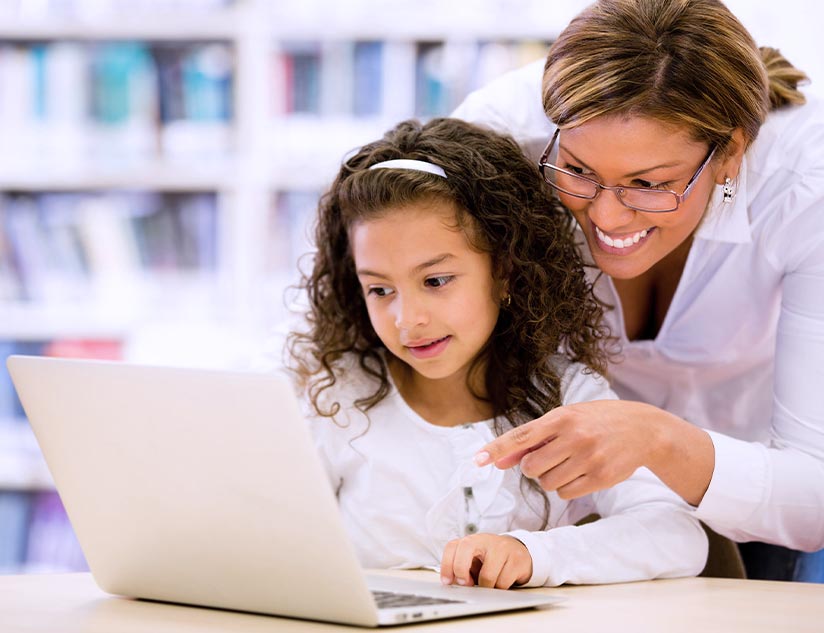The pandemic spotlighted the longstanding inefficiencies in the K-12 education system. Even before the pandemic, educational inequalities worldwide were a stark reality, but the sudden switch to remote learning only exacerbated it. On the other hand, technological innovations in classrooms reached new heights. Educators found new EdTech tools to drive innovative pedagogical approaches, together with direct instruction, to help students retain more and be more creative.
Impact of Technology on Mental Health
There is a tremendous visible imbalance here. Access to high-quality instructional materials was possible only for a section of students from higher-income households. For others, personal losses, continued school closures, and lack of educational opportunities led to huge learning losses and grave consequences for their mental health.
In the US, suicide attempts among adolescents increased 31% in 2020, compared to 2019. As a result, the American Academy of Pediatrics (AAP), the American Academy of Child and Adolescent Psychiatry (AACAP), and the Children’s Hospital Association (CHA) in the US declared a national state of emergency in children’s mental health in October 2021. Further, the prolonged stay-at-home orders, isolation, lack of contact with friends, and uncertainty over their future added to their stress. In a recent study on 11,000 K-12 students older than 13, 51% reported feeling stressed, and 38% were worried about their mental well-being.
On the other side of the spectrum are students who suffer an addiction from too much screen time and anxiety, vision problems, stress, depression. Children use screens as a way of distraction from complex emotions and schoolwork.
Students Need More Control Over Their Learning Curves
Along with access to online education, children need to be more in control over their learning today. Research proves that when students become active participants in their education, they become increasingly engaged. This autonomy results in increased emotional well-being and positive academic outcomes.
Modern technology has given us innovative ways to engage students online. However, most online programs are offline modules uploaded on the internet. As a result, they limit interactions between students and teachers and don’t accommodate that different students learn at different paces.
Instead, online learning needs to create meaningful experiences and put control back in the student’s hands. Research has proven that this can close learning gaps and increase engagement.
What Happens When Students Have More Control
1. Fostering Meta Cognition and Independence
Such learning exercises invite students to engage more thoughtfully with the content. When teachers design content to foster learner independence, it pushes students to challenge their preconceived notions, debate controversial subjects, listen to what others have to say, and develop an open mind about issues. Teachers can participate in discussions, offer feedback, and help students draw their conclusions.
2. Developing Skills to Survive in the 21st Century
Today, we need to equip students with a range of skills and competencies, right from basic literacy and numeracy skills, to problem-solving, collaboration, and critical thinking. They need these to survive an increasingly complex society, changed forever with the onset of the pandemic. In addition, they need to use technology and data to measure their progress smartly and influence outcomes through constructive actions.
According to research, students who they have control over their efforts and outcomes tend to be:
- Open to challenges
- Resilient against failures
- Risk-takers
- Persistent in their efforts
- Good at estimating their capabilities
- More collaborative
- More focused on constructive efforts when depressed.
3. Enable Growth through Self Analysis
Technology can enable teachers to give feedback. However, personalized learning can help build students’ capacity for self-assessment too. For example, rubrics can help students monitor their growth during a project. Teacher feedback during a project has to be objective since the rubric determines the measures of the outcome. The ability to self-assess is again a sign of independence, a valuable skill for future success.
4. Avoiding Learned Helplessness
When students have no sense of control over their learning and outcomes, it fosters a psychological trait called learned helplessness. In addition, it may lead to social isolation and shift their focus to avoiding the school environment. That leads to poorer academic outcomes, depression, dropouts, and many related issues.
While many learning challenges are real, the stress should be on how to improve their circumstances and help them achieve better outcomes.
Addressing Disparities in the Education System
A report by the US Department’s Office for Civil Rights (OCR) stated that the pandemic deepened the impact of the digital divide for many students of color and those who were struggling to learn English before the pandemic.
The abrupt shift to online learning made the struggles harder. However, a personalized learning pathway can solve the longstanding disability-based disparities in learning outcomes.
Being safe online is a prerequisite for students to take active control of their learning. The team behind the MagicBox™ platform strives to make it possible for educators and students to access personalized learning and provide them with a safe environment.
Contact us if you are ready to transform learning experiences for your teachers and students.















